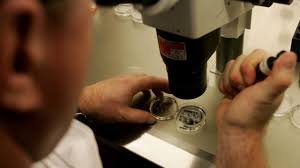
ABUJA, Nigeria – Scientists have for the first time turned human skin cells into eggs and fertilised them with sperm in a laboratory setting, raising hopes for new infertility treatments.
The breakthrough, described in Nature Communications on Wednesday, was led by US researchers at Oregon Health & Science University.
The process, known as in-vitro gametogenesis, could eventually allow infertile people, older women, and same-sex couples to have genetically related children.
“This is a proof of concept, but it could one day transform how we understand infertility,” said co-author Dr Paula Amato.
The team used a method called somatic cell nuclear transfer, previously used to clone Dolly the sheep. Scientists removed nuclei from skin cells and placed them into donor eggs stripped of their own nuclei. By using a process called “mitomeiosis” to mimic natural cell division, they created 82 oocytes, which were then fertilised through IVF.
Less than nine percent developed to the blastocyst stage — embryos capable of implantation. However, researchers noted that only one-third of embryos survive this stage during natural reproduction.
Despite abnormalities in the embryos, reproductive medicine expert Ying Cheong of the University of Southampton called the advance “exciting,” saying it shows ordinary body cells can mimic egg formation.
Experts caution the technology is at least a decade away from clinical use.
“The biggest hurdle is creating genetically normal eggs,” Amato said, stressing the research followed US ethical guidelines on embryo use.




